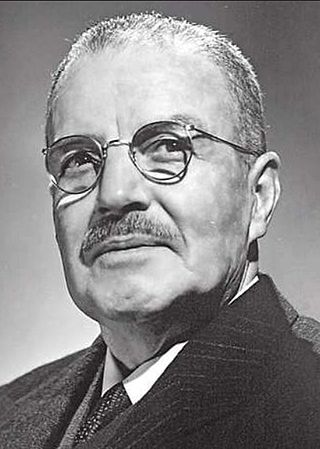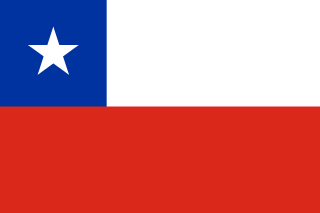This article needs additional citations for verification .(February 2024) |
| |||||
| Decades: | |||||
|---|---|---|---|---|---|
| See also: | |||||
The following lists events that happened during 1925 in Chile.
This article needs additional citations for verification .(February 2024) |
| |||||
| Decades: | |||||
|---|---|---|---|---|---|
| See also: | |||||
The following lists events that happened during 1925 in Chile.

General Carlos Ibáñez del Campo was a Chilean Army officer and political figure. He served as President twice, first between 1927 and 1931, and then from 1952 to 1958, serving for 10 years in office.

Jorge Eduardo Alessandri Rodríguez was the 26th President of Chile from 1958 to 1964, and was the candidate of the Chilean right in the crucial presidential election of 1970, which he lost to Salvador Allende. He was the son of Arturo Alessandri, who was president from 1920 to 1925 and again from 1932 to 1938.

Arturo Fortunato Alessandri Palma was a Chilean political figure and reformer who served thrice as president of Chile, first from 1920 to 1924, then from March to October 1925, and finally from 1932 to 1938.

Instituto Nacional General José Miguel Carrera, often shortened to Instituto Nacional, is a public middle and high school in downtown Santiago, Chile which teaches 4.400 students between 7th and 12th grade. 170 teachers are employed.

Government Junta of Chile, was the political structure established to rule Chile following the anti-conservative military coup that assumed power after first interfering in progressive President Arturo Alessandri's deadlocked government. It ruled the country until it was ousted by yet another military coup, and gave way to the January Junta.
Government Junta of Chile, was the political structure established to restore power to President Arturo Alessandri, after he had been deposed in 1924. On January 23, 1925, a military movement of young officers, wrestled power from the previous September Junta. Then they organized a new Junta and recalled president Alessandri back to his post. The Junta lasted until Alessandri's resumption of power.

The Chilean coup d'état of 1925 took place on January 23, 1925, when the Chilean military overthrew the September Junta. Led by Colonel Marmaduque Grove, the troops arrested the Junta's President, General Luis Altamirano, and then handed the power to General Pedro Dartnell as interim President. The organizers of the coup hoped to recall former president Arturo Alessandri Palma, who had been forced into exile after the September Junta's coming to power. However, General Dartnell ultimately refused to rule alone and formed the January Junta a few days later, handing power to Emilio Bello Codesido. Alessandri only returned from exile on March 20, 1925, putting an end to the junta.

The Conservative Party of Chile was one of the principal Chilean political parties since its foundation in 1836 until 1948, when it broke apart. In 1953 it reformed as the United Conservative Party and in 1966 joined with the Liberal Party to form the National Party. The Conservative Party was a right-wing party, originally created to be the clericalist, pro-Catholic Church group.
The Liberal Party was a Chilean political party created by a faction of pipiolos in 1849. After the conservative victory in the Chilean Civil War of 1829 the liberals became the principal opposition party to the Conservative Party. During the Liberal Party's early history one of its main goal was to create a new constitution to replace the Chilean Constitution of 1833. Rigged election helped to prevent the Liberal Party's presidential candidates to be elected until 1861, during that time elements of the liberal party made attempts to overthrow the government, these were the Revolution of 1851 and the Revolution of 1859. These failed insurrections led many liberals to emigrate, among them Benjamín Vicuña Mackenna. In 1863 a group of liberal split off to form the Radical Party which would hold power from 1938 to 1952. Originally an anticlericalist party that championed classical liberalism, the liberals later became a right-wing party.

The Radical Party was a Chilean political party. It was formed in 1863 in Copiapó by a split in the Liberal Party. Not coincidentally, it was formed shortly after the organization of the Grand Lodge of Chile, and has maintained a close relationship with Chilean Freemasonry throughout its life. As such, it represented the anticlericalist position in Chilean politics, and was instrumental in producing the "theological reforms" in Chilean law in the early 1880s. These laws removed the cemeteries from the control of the Roman Catholic Church, established a civil registry of births and death in place of the previous recordkeeping of the church, and established a civil law of matrimony, which removed the determination of validity of marriages from the church. Prior to these laws, it was impossible for non-Catholics to contract marriage in Chile, and meant that any children they produced were illegitimate. Non-Catholics had also been barred from burial in Catholic cemeteries, which were virtually the only cemeteries in the country; instead, non-Catholics were buried in the beaches, and even on the Santa Lucia Hill in Santiago, which, in the 19th century, functioned as Santiago's dump.

Luis Barros Borgoño was a Chilean politician who served as Vice President of Chile in 1925.

The Parliamentary Era in Chile began in 1891, at the end of the Civil War, and spanned until 1925 and the establishment of the 1925 Constitution. Also called "pseudo-parliamentary" period or "Parliamentary Republic", this period was thus named because it established a quasi-parliamentary system based on the interpretation of the 1833 Constitution following the defeat of President José Manuel Balmaceda during the Civil War. As opposed to a "true parliamentary" system, the executive was not subject to the legislative power but checks and balances of executive over the legislature were weakened. The President remained the head of state but its powers and control of the government were reduced. The Parliamentary Republic lasted until the 1925 Constitution drafted by President Arturo Alessandri and his minister José Maza. The new Constitution created a presidential system, which lasted, with several modifications, until the 1973 coup d'état.
The Liberal Democratic Party, also called Balmacedists, was a liberal party in Chile. It was one of the main actors of the Chilean parliamentary system from 1891 to 1925.

The Presidential Republic is the period in the history of Chile spanning from the approval of the 1925 Constitution on 18 September 1925, under the government of Arturo Alessandri Palma, to the overthrow of the Popular Unity government headed by the President Salvador Allende on 11 September 1973. The period is concurrent with the "Inward Development" period in Chilean economic history.
The timeline shows changes, both personal or title, of the head of state and the head of government of the Republic of Chile from 18 September 1810 until today, regardless of whether president, vice-president, supreme director, interim or junta.

The Democrat Party of Chile was a Chilean political party created by a left-wing faction of the Radical Party in 1887. It was created to protect the working and middle class, but over the years it became a traditional political movement, with factions of center-right and center-left.
The following lists events that happened during 1920 in Chile.
The following lists events that happened during 1927 in Chile.

Claudio Vicuña Subercaseaux was a Chilean farmer and politician, member of the Liberal Democratic Party. He served as a deputy and a state minister during the presidencies of presidents Ramón Barros Luco and Arturo Alessandri.